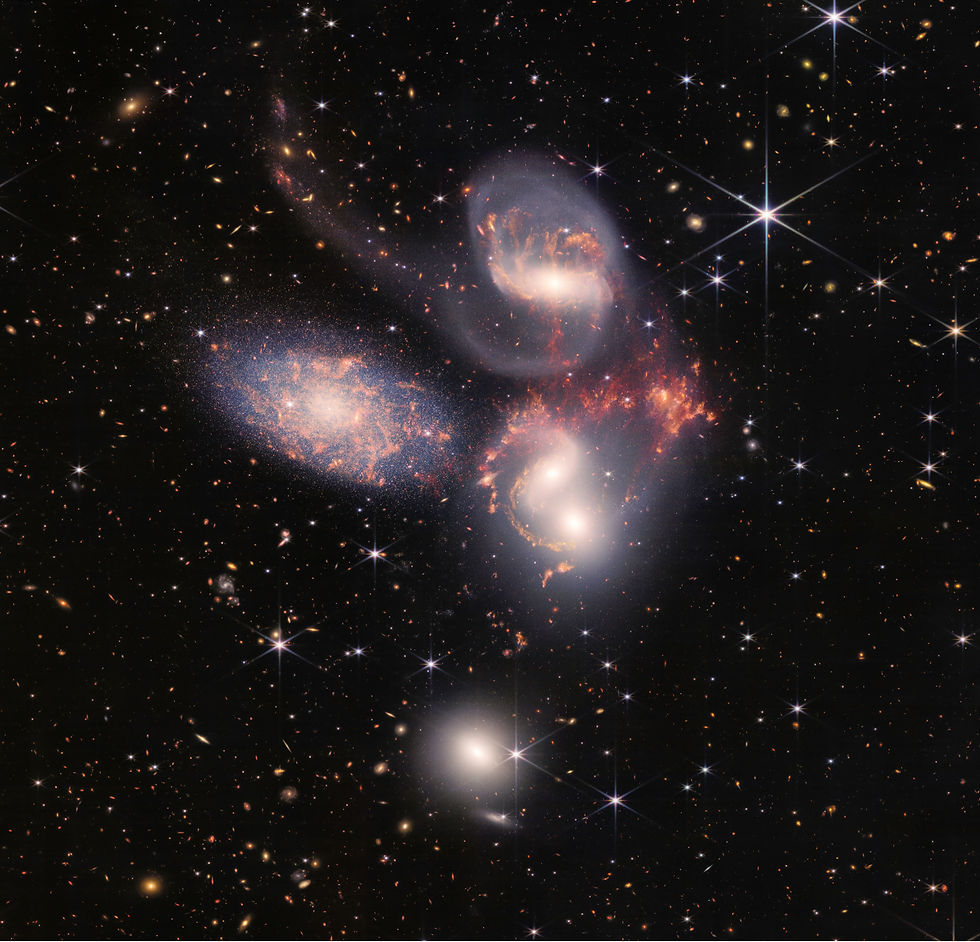The Universe Waved and We Heard It
- Digital Rabbit

- Jun 3, 2016
- 3 min read
Updated: Nov 4, 2023
More than 100 years ago Einstein predicted the existence of gravitational waves—ripples in spacetime, where space is stretched in one direction and compressed in the other. The prediction is a consequence of his theory of general relativity, fitting nicely with his mathematical model. It wasn’t until September 14, 2015 that anyone observed a gravitational wave. It’s not that the Earth hasn’t been hit by them. We haven’t had a way to detect them. Gravitational waves are very tiny. Really tiny. Like 1/1000 the diameter of a proton. To measure something like that, you need a very special instrument—an interferometer, and not just an off-the-shelf model.
The Laser Interferometer Gravitational-Wave Observatory (LIGO) is designed specifically to detect these waves. The project is a collaboration of many scientists, technicians, colleges, and universities. LIGO uses two interferometers, one located in Hanford, Washington and the other in Livingston, Louisiana. Each is identical, even in its orientation. They are very large instruments, as you can see in these images (courtesy of LIGO CalTech). This is the Hanford site. The next image is the Livingston site.

When a gravitational wave encounters the Earth, it will reach one of the locations first. This gives scientists clues to the origin of the wave. When the wave arrived on September 14, it was seen at both locations, but with a 7 millisecond difference—the time it took for the wave to travel from one location to the other.

The wave is so tiny that you might wonder if LIGO really detected a gravitational wave. They weren’t sure either, which is why they did not announce their finding until February 11, 2016. This gave scientists a chance to complete various verification protocols that gave the confidence of almost 100% that they did indeed observe a gravitational wave.
It is an extraordinary observation considering that footsteps, storms, traffic, ambient temperature, and just about anything else you can think of that causes motion can be detected by LIGO. It is an incredibly sensitive instrument. So sensitive, it can detect the motion of ocean waves during a storm. The scientists use a variety of techniques to tease out the signal of a gravitational wave from the noise of everything else. For example, to subtract out the ground vibrations contributed at each location, they place an array of 100 seismic detectors at each interferometer site. Using the seismic signals and machine learning techniques (statistics) scientists can figure out which vibrational “squiggles” are from the site and which are not. They have to use a different technique for each type of unwanted noise source.
What is actual signal like? It’s a short chirp.
This is relatively old news, so why am I writing about it? Barry Barish is speaking at STARMUS 2016 on “Einstein, Black Holes and a Cosmic Chirp.” I will be attending STARMUS and decided to find out what role Barry Barish had in the discovery.
The National Science Foundation first funded exploratory studies in 1980. By 1989 the project started in full force, more or less. An experiment of this magnitude requires a special person to run the project. It’s a big budget, with personnel and instruments spread over several locations. It’s cutting edge science. It had to be precisely executed. The people in charge, though extremely smart and well meaning, weren’t able to make sufficient progress. It wasn’t until Barry Barish was appointed laboratory director in 1994 that LIGO took off. One person can make a difference. I look forward to his talk.



Comments